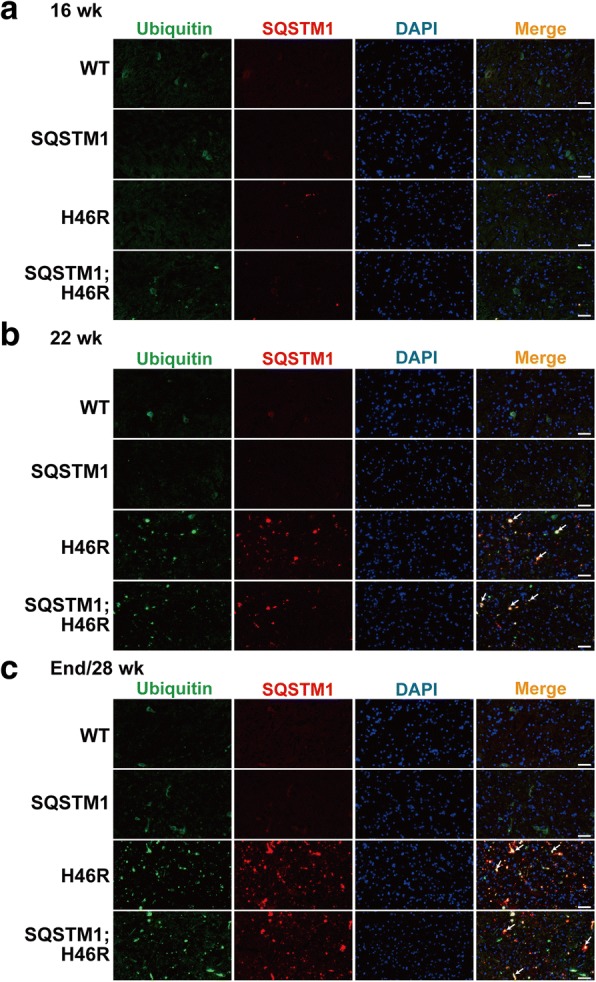Fig. 3.

Progressive accumulation of ubiquitin/SQSTM1-positive aggregates in the anterior horn of lumbar spinal cord. a-c Representative images of double immunostaining with Ubiquitin (green) and SQSTM1 (red) in the lumbar spinal cord (L4–5) from wild-type (WT), SQSTM1 (SQSTM1), SOD1H46R (H46R) and SQSTM1;SOD1H46R (SQSTM1;H46R) mice at 16 weeks of age (wk) (a), 22 wk. (b), and end-stage (H46R and SQSTM1;H46R) or 28 wk. (WT and SQSTM1) (c). The nuclei were counterstained with DAPI (blue). Scale bars = 50 μm. Ubiquitin-positive aggregates and SQSTM1 aggregates were observed in the anterior horn of SOD1H46R (H46R) and SQSTM1;SOD1H46R (SQSTM1;H46R) mice at 22 wk. and end-stage. Arrows indicate ubiquitin-positive aggregates that are colocalized with SQSTM1
